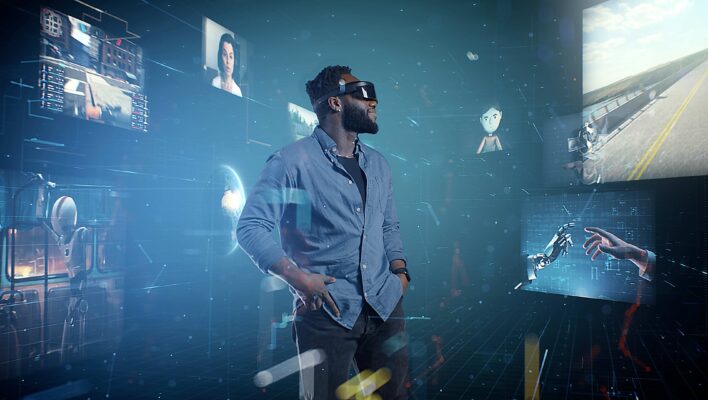As the world of non-fungible tokens (NFTs) continues to evolve, new innovations are constantly emerging to enhance the utility, value, and uniqueness of these digital assets. One such innovation gaining traction in the NFT space is NFTRandomize. By incorporating random elements into NFTs, this concept opens up new possibilities for creators, collectors, and the blockchain community at large. NFTRandomize brings an exciting dimension to the world of NFTs, making them not just unique but dynamic and unpredictable.
In this article, we will explore what NFTRandomize is, how it works, its various applications, and its impact on the NFT ecosystem. We will also examine its potential benefits, challenges, and the future of randomization in NFTs.
What is NFTRandomize?
NFTRandomize refers to the concept of randomizing the attributes or characteristics of an NFT during its creation or interaction. Unlike traditional NFTs, which are static and retain the same features over time, NFTRandomize introduces randomness into the metadata or smart contract associated with the NFT. This means that when an NFT is minted or interacted with, its features—such as its visual design, functionality, or even ownership benefits—can change or evolve in unpredictable ways.
The primary appeal of NFTRandomize lies in its ability to create dynamic digital assets. These NFTs can adapt, grow, or evolve based on random factors encoded into the smart contract. This randomization process could take place at different points, such as during minting, after certain events, or even after a certain amount of time has passed.
How Does NFTRandomize Work?
NFTRandomize relies on the integration of smart contracts and blockchain technology to execute the randomization process. A smart contract is a self-executing contract with the terms of the agreement directly written into code. In the case of NFTRandomize, the smart contract includes a randomization algorithm that defines how the NFT’s attributes will be determined.
Minting Process:
When an NFT is minted, the smart contract will generate random attributes for the token. These attributes could be anything from visual traits (such as colors, patterns, or textures) to more complex features, like the functionality of the NFT in a virtual world or its associated rewards.
Randomization Triggers:
Randomization can occur in various ways. Some NFTRandomize NFTs are randomized at the time of minting, while others may change upon specific interactions or events. For example, a game-related NFT might change its abilities or features based on user actions or milestones achieved in the game.
External Oracles for Randomness:
Some projects use external oracles to bring off-chain data into the smart contract. This data could influence the randomization process, making it even more unpredictable. Oracles could include real-world factors like market conditions, game results, or even external randomness like water data.
Dynamic Metadata Updates:
Unlike traditional NFTs, where metadata is static and remains unchanged, NFTRandomize NFTs may update their metadata over time. These updates could involve altering the visual appearance or functionality of the NFT based on random factors or pre-defined conditions coded into the contract.
Applications of NFTRandomize
The versatility of NFTRandomize makes it applicable across various sectors in the digital and blockchain world. Below are some of the most exciting and innovative applications of this technology:
1. Randomized Art and Digital Collectibles
The integration of NFTRandomize in digital art NFTs can unlock new creative possibilities. Instead of owning a static piece of artwork, collectors can own a living, evolving piece that randomly changes its design, colors, patterns, or even conceptual elements. This randomness can increase the appeal of digital art, as each interaction with the artwork may result in a different experience.
Artists can use NFTRandomize to create artwork that continuously evolves, making it more dynamic and engaging. This randomness could even be tied to certain actions or events, such as the number of times the NFT is transferred or the amount of time it is owned.
2. Gaming and Virtual Worlds
In the gaming industry, NFTRandomize can be used to create unique in-game assets such as characters, skins, weapons, and items. For example, when a player acquires an NFT item, it could have randomly generated stats or attributes that affect its performance in the game. This adds an element of surprise and excitement, as each player’s experience with the same NFT could differ greatly.
Moreover, in virtual worlds and metaverses, players can collect and trade randomized land parcels, buildings, or avatars, ensuring that no two virtual assets are identical. This randomization leads to a more varied and engaging virtual experience.
3. NFT Collectibles and Mystery Boxes
One of the most popular ways to integrate randomization into NFTs is through mystery boxes or loot boxes. In this setup, collectors purchase a mystery box NFT, and the contents inside—whether it’s a collectible item, artwork, or digital asset—are randomly generated. This format mirrors the excitement of opening a physical collectible pack, and the rarity of the item inside can vary based on the randomization algorithm.
For example, a mystery box could contain rare or limited-edition digital assets that only a few collectors have access to. The randomness makes each purchase more thrilling, as there’s always a chance of getting something highly valuable.
4. Decentralized Finance (DeFi) and Randomized Rewards
NFTRandomize can also be integrated into DeFi applications, where participants can receive randomized rewards based on their actions or stake. For example, by staking a specific cryptocurrency, users could receive NFTs with randomly assigned rewards, such as interest rates or yield multipliers. This gamification element can increase user engagement in DeFi protocols.
5. Music and Audio NFTs
In the music and entertainment industry, NFTRandomize can create dynamic audio NFTs. Musicians could release NFTs that randomly alter the song, such as changing instruments, tempos, or even lyrics each time they’re played. This could allow artists to offer an ever-changing experience to their fans, adding value and uniqueness to the music.
Benefits of NFTRandomize
The incorporation of NFTRandomize into NFTs offers numerous benefits to both creators and collectors:
1. Increased Rarity and Value
The randomization process ensures that each NFT is unique. This added layer of rarity can significantly increase the value of NFTs, as collectors are more likely to seek out rare and one-of-a-kind digital assets.
2. Boosted Creativity
NFTRandomize offers creators more flexibility and freedom to experiment with interactive, evolving, and dynamic digital assets. Artists can take advantage of randomization to create more engaging and immersive experiences for their audience.
3. Enhanced Engagement and Community Building
The unpredictability of randomized NFTs keeps collectors and players engaged. Whether it’s by minting random art, acquiring mystery box rewards, or unlocking hidden features in a game, the sense of discovery and excitement fosters a stronger community and connection with the NFT ecosystem.
4. Fairer Distribution of Rare Items
By randomizing the distribution of rare items or rewards, NFTRandomize ensures a fairer and more transparent process. This eliminates the bias or favoritism that can occur in traditional limited-edition drops, where some participants have an unfair advantage.
Challenges and Considerations
While NFTRandomize offers exciting possibilities, there are several challenges and considerations:
1. Complexity of Smart Contract Development
Randomization algorithms and dynamic metadata updates require sophisticated programming and testing. Developers need to ensure that the randomization process is truly fair and transparent, which can be technically challenging.
2. Dependence on External Oracles
Some NFTRandomize projects rely on external oracles for randomness, which introduces an element of risk. If the oracle fails or is manipulated, the fairness of the randomization process could be compromised.
3. Environmental Concerns
As with all blockchain-based technologies, the energy consumption associated with NFTs and smart contracts is a concern. More sustainable blockchain networks are being developed, but this remains a challenge for many NFTRandomize applications.
FAQs
1. What exactly is NFTRandomize?
NFTRandomize is a concept that integrates random elements into NFTs, creating dynamic and evolving digital assets. These assets can change based on user interaction or predefined triggers, offering more unpredictability and uniqueness.
2. How does randomization work in NFTs?
Randomization is achieved through smart contracts that include algorithms generating unpredictable attributes for the NFT, such as visual traits or functionality. External oracles may also be used to enhance randomness.
3. What industries can benefit from NFTRandomize?
NFTRandomize has applications in digital art, gaming, collectibles, DeFi, and music, among others. It can create unique, engaging experiences for collectors and users in a variety of fields.
4. Are NFTRandomize NFTs more valuable?
Due to their random and evolving nature, NFTRandomize NFTs can become more valuable, as they offer collectors rare and unique attributes that increase demand.
5. Are there any risks involved in NFTRandomize?
The main risks involve technical challenges with smart contract development, reliance on external oracles, and environmental concerns due to blockchain energy consumption.
Conclusion
NFTRandomize introduces a new era for NFTs, making them not just assets but interactive, dynamic, and unpredictable experiences. Whether you’re an artist, collector, gamer, or investor, this innovation adds a layer of excitement, engagement, and rarity to the NFT ecosystem. With its potential to revolutionize the way we create, collect, and interact with digital assets, NFTRandomize is set to play a significant role in the future of the blockchain and digital art world.










